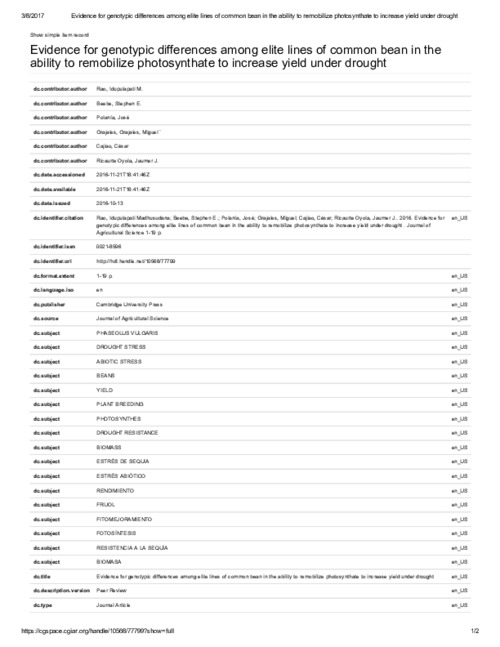Evidence for genotypic differences among elite lines of common bean in the ability to remobilize photosynthate to increase yield under drought
Abstract
Common bean (Phaseolus vulgaris L.) is the most important food legume for human consumption. Drought stress is the major abiotic stress limitation of bean yields in smallholder farming systems worldwide. The current work aimed to determine the role of enhanced photosynthate mobilization to improve adaptation to intermittent and terminal drought stress and to identify a few key adaptive traits that can be used for developing drought-resistant genotypes. Field studies were conducted over three seasons at Centro Internacional de Agricultura Tropical, Palmira, Colombia to determine genotypic differences in adaptation to intermittent (two seasons) and terminal (one season) drought stress compared with irrigated conditions. A set of 36 genotypes, including 33 common bean, two wild bean and one cowpea were evaluated using a 6 × 6 lattice design under irrigated and rainfed field conditions. Three common bean elite lines (NCB 226, SEN 56, SER 125) were identified with superior levels of adaptation to both intermittent and terminal drought stress conditions. The greater performance of these lines under drought stress was associated with their ability to remobilize photosynthate to increase grain yield based on higher values of harvest index, pod harvest index, leaf area index and canopy biomass. Two wild bean germplasm accessions (G 19902, G 24390) showed very poor adaptation to both types of drought stress. One small-seeded black line (NCB 226) was superior in combining greater values of canopy biomass with greater ability to mobilize photosynthates to grain under both types of drought stress. Two small-seeded red lines (SER 78, SER 125) seem to combine the desirable traits of enhanced mobilization of photosynthates to seed with effective use of water through canopy cooling under terminal drought stress. Pod harvest index showed significant positive association with grain yield under both types of drought stress and this trait can be used by breeders as an additional selection method to grain yield in evaluation of breeding populations for both types of drought stress

